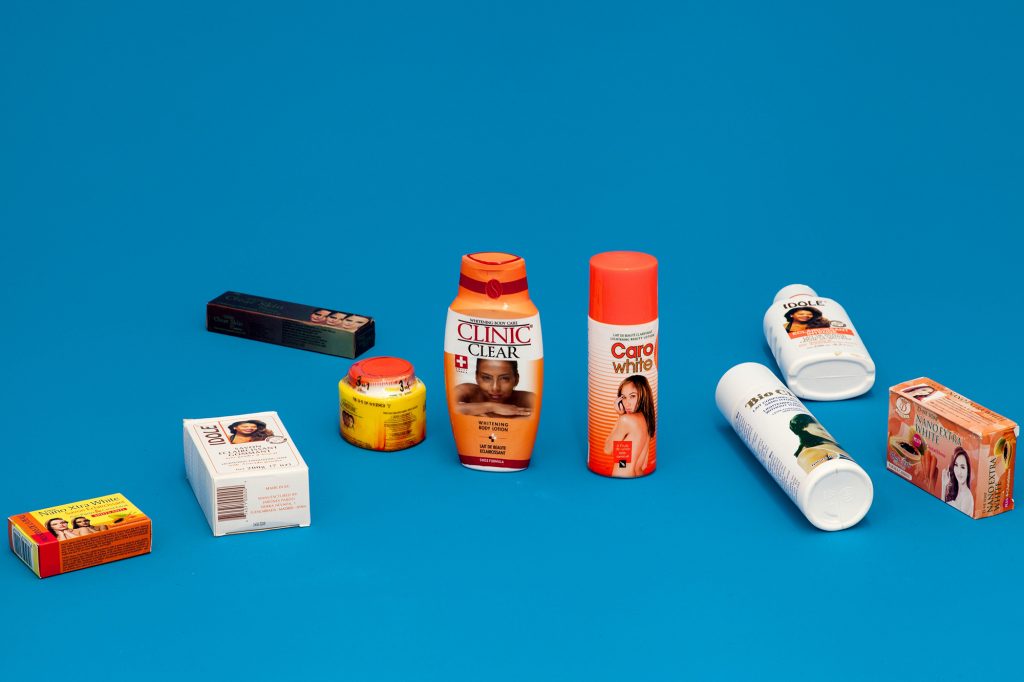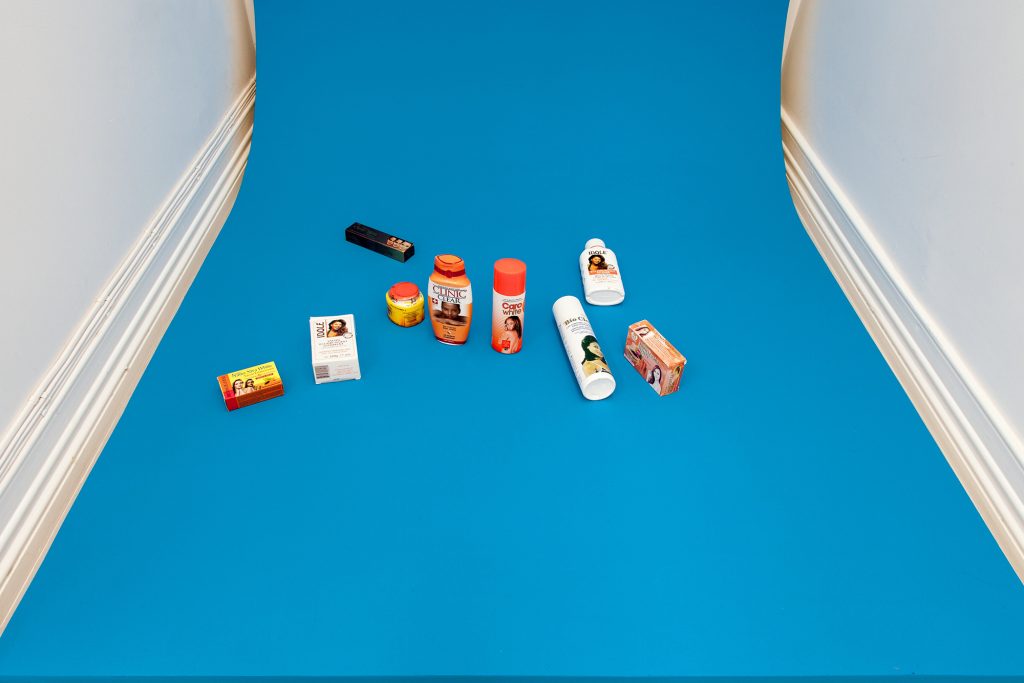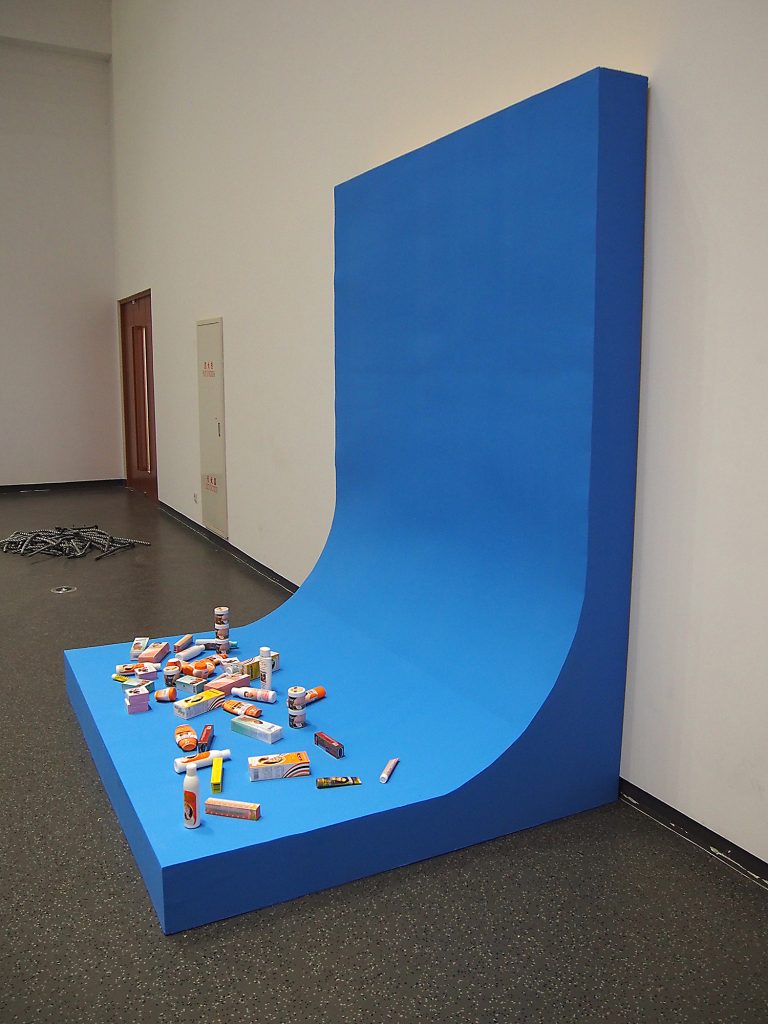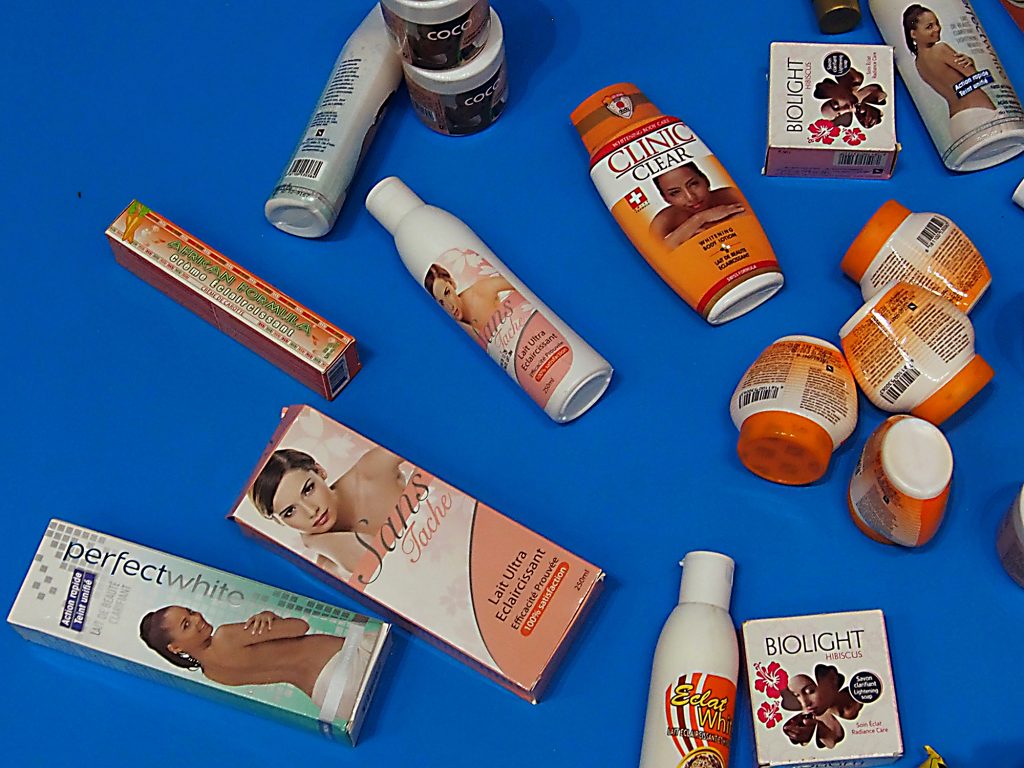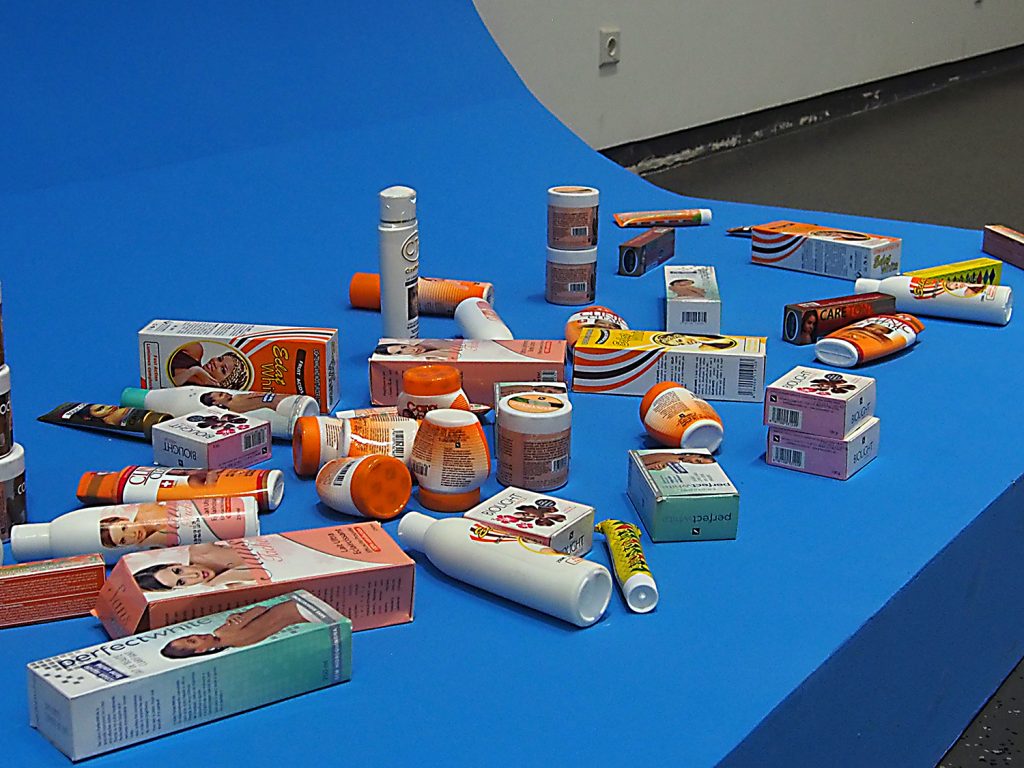Installation, 2017
Plywood, paint and various examples of the most popular skin bleaching creams used in Africa. Dimensions variable
Image view: Galleri Riis, Oslo, Norway
In November 2016, I traveled to Lomé, the capital of Togo. I was surprised by the overflow of commercial billboards promoting cosmetic products for whitening the skin. One of the billboards that touched me the most was an image of a woman with a dark complexion of African origin with a sad, insecure face. Parallel on the right side of this picture was another picture of the same woman – now with a cheerful countenance and a very light complexion.
This type of propaganda contaminates the public space, contributing to personal insecurity among the population, discrimination and ultimately racism.
The piece I made touches topics such as post-colonialism, mental poverty, and the international cosmetic industry, which not only creates a product but creates a subject for the product.
Skin bleaching reduces the content of melanin in the skin. Many of the chemicals used in these products are toxic and can result in significant short and long-term damage to the skin, as well as to the social and cultural fabric of the mostly poor and underdeveloped societies where they are promoted and sold.
The title of the piece is inspired by special effects techniques in photo and film postproduction for compositing and layering, based on color hues or chromatic range. Its main purpose is to enable change of background from the subject.
Metaphorically, I use this method of removing the background of an image applied to the cosmetic function. As an act of amnesia, the consumer tries to erase and replace their own origin.

